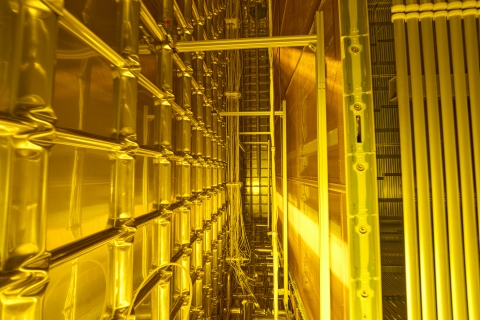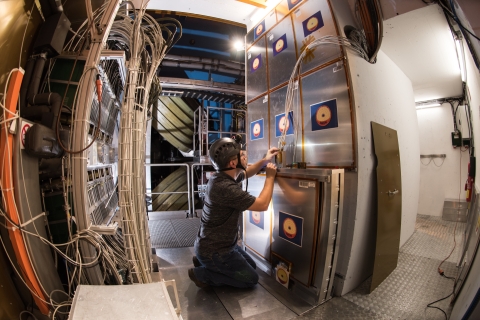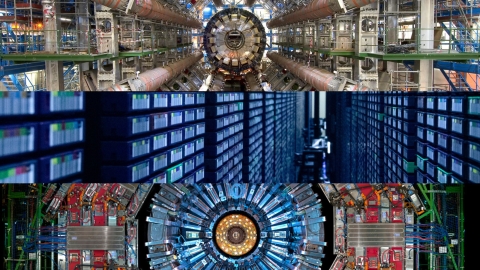April 2024 - June 2024
Discover how CERN's innovative cryostat technology is advancing neutrino physics
As stated in the 2020 Update of the European Strategy for Particle Physics, the existence of non-zero neutrino masses is a compelling sign of new physics. The worldwide neutrino physics program explores the full scope of the rich neutrino sector and…
Read moreA high-dimensional jet-powered measurement of the strong force
Top image: An event display of a high-momentum Z boson event in the ATLAS detector associated with a number of “jets”, which are complex clusters of particles created via interactions mediated by the strong force. Precise measurements of fundamental…
Read moreMoEDAL-MAPP Experiment’s Quest for Anomalously Charged Avatars of New Physics
Nature, as described by the Standard Model (SM), has decreed that stable or pseudo-stable subnuclear charged particles can only have an observable electrical charge of ±1e, where e is the charge of an electron and that there is no magnetic charge.…
Read moreExploration with LHCb: from unseen to rare
ol{margin:0;padding:0}table td,table th{padding:0}.c0{padding-top:0pt;padding-bottom:0pt;line-height:1.1500000000000001;orphans:2;widows:2;text-align:left;height:11pt}.c3{color:#000000;font-weight:400;text-decoration:none;vertical-align:baseline;…
Read moreNextGen Triggers: Pioneering R&D for HL-HC Data Acquisition and Event Processing
The High-Luminosity LHC upgrade will provide an unprecedented challenge to the data acquisition and online event processing capabilities of ATLAS and CMS. Both experiments are currently undergoing major upgrades to prepare their detectors to cope…
Read moreEdge SpAIce: Leveraging CERN's AI for Real-Time Ocean Plastic Tracking from Space
Earth Observation (EO) and particle physics research have more in common than you might think. In both environments, whether capturing fleeting particle collisions or detecting transient traces of ocean plastics, rapid and accurate data analysis is…
Read moreLooking in all directions for long-lived particles at the LHC
In 1984, Alvaro de Rujula pointed out that the proton-proton collisions at the LHC would produce large fluxes of very high energy neutrinos in the forward direction [1]. In 2023, almost 40 years later, the FASER and SND experiments ushered in the…
Read moreSHiP Experiment: Charting New Territory in Particle Physics
Full speed ahead Layout of the SHiP experiment, with the target on the left and the experiment in the ECN3 hall. Credit: SHiP collaboration. In a significant step forward for particle physics, CERN’s Research Board recently approved the SHiP (…
Read more







